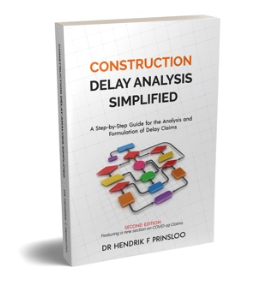Delay Analysis
TIME IMPACT ANALYSIS: THE UNDISPUTED KING OF DELAY ANALYSIS METHODS?
FORMULATION | ANALYSIS | MANAGEMENT

Even after publishing articles on Delay Analysis Methods for many years, I am still surprised by some of the comments. I always thought that haters are restricted to social media platforms like Twitter, Facebook, etc. but recently I learned that even Delay Analysis Methods can attract the attention of haters. My recent article on the Collapsed As-Built methods was greeted with some scathing comments on the applicability of the method in the real world. Don’t get me wrong I do appreciate these comments because it shows that many people are contemplating how best to deal with delays. Let’s see how people feel about the Time Impact Analysis. If the reference to a prescribed delay analysis method in contractual agreements is taken as a measure of the popularity, the Time Impact Analysis would certainly be the most popular method.
In this article, the application of the Time Impact Analysis is discussed by reviewing the steps to apply it, limitations, and when this method is suitable. A practical example of applying this method in a project delay scenario is also provided. After this review, we should be able to answer the question of whether Time Impact Analysis is the undisputed king of delay analysis methods.

Dr Hendrik Prinsloo is an expert witness and specialist in the analysis construction delay claims
Description:
Determine the effect on the project completion date by incorporating the delay into a contemporaneous schedule.
Requirements to utilise this method:
- Baseline Programme with critical path
- Contemporaneously updated Baseline Schedule or information to update the Baseline Schedule
- Delay event information
When to utilize:
- Prospectively
- The effect of the delay event has not been experienced or is still ongoing
- The likely effect of the delay is forecasted
Steps:
- Use a contemporaneously updated (baseline) schedule for the project.
- If an updated schedule is not available, update the baseline schedule with current progress information.
- Incorporate the delay event as activity in the updated schedule and link it to all activities that it will impact.
- Recalculate the completion date.
- The difference between the initial completion date in the updated schedule and the completion date on the recalculated schedule will constitute the effect of the delay.
Limitations:
- The actual effect of the delay is not provided as the method is executed prospectively (before the actual impact of the delay is known).
- The update schedule that is utilized as the basis of the analysis could possibly include acceleration and mitigation of the delay by the contractor impacting the accuracy of the forecasted effect of the delay.
- Accuracy of the results is dependent on the quality of the baseline schedule and the updated schedule.
- This method can be expensive and time-consuming.
Choose this method when:
- The actual effect of the delay event is not yet known.
- A contemporaneously updated schedule is available or can be compiled.
- When the importance of the outcome justifies more time and money being spent on the analysis
process.
Time Impact Analysis – Example
Delay description:
Time Impact Analysis – Example
There is an extremely long lead time for the installation of service connections in the city where the project is located. The employer/owner planned to start the application process when the funding is secured and the contractor is appointed but unfortunately, the application is submitted 3 weeks (15 working days) late.
Step 1 – Use a contemporaneously updated (baseline) programme/schedule for the project prior to the occurrence of the delay.



Outcome – If the delay is excusable in terms of the contractual agreement the contractor should be awarded an 8 calendar day extension of time.
Conclusion
We posed the question of whether the Time Impact Analysis is the undisputed king of delay analysis methods. With this simple example, it is evident that the Time Impact Analysis is extremely effective when the impact of a delay is determined prospectively. Perhaps this is the reason why some construction contracts prescribe the use of this method for the analysis of delay claims. Construction contracts are often utilized as a tool to reduce the risk of late project completion. From a risk reduction point of view, it is preferable to deal with delays as they occur and that is perhaps the reason for the popularity of the method during project execution.
In a forensic delay analysis context, project delays are often analyzed retrospectively. When the Time Impact Analysis is utilized retrospectively the limitations of this method become more apparent. The critical path and sequencing of activities often change in response to the occurrence of a delay event. The Time Impact Analysis provides a forecast of the impact of the delay on completion at a specific point in time and will therefore not take into account future schedule changes. This is often lodged as a criticism against the Time Impact Analysis. Despite these limitations, the Time Impact Analysis remains a valuable tool, even in retrospective analysis, to isolate the impact of the delay event on completion.
So, is the Time Impact Analysis the undisputed king of delay analysis methods? Perhaps only in part, its value in prospective analysis is undisputed but in retrospective analysis, the Time Impact Analysis is also burdened, like many other methods, with limitations.

